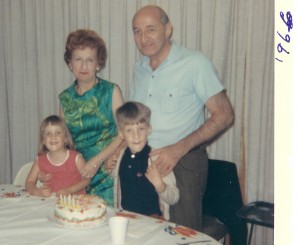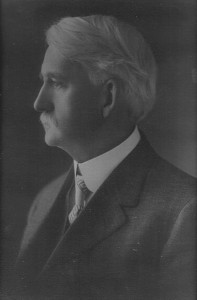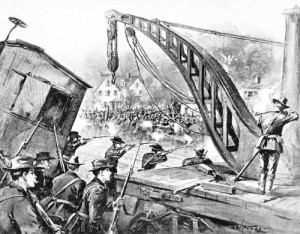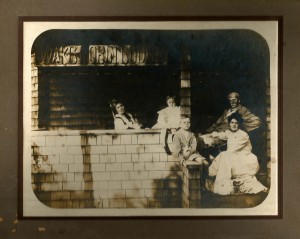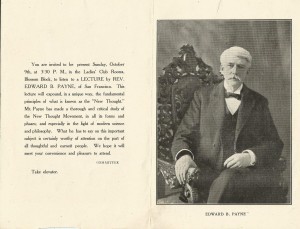Jack London: Two Unpublished Letters ‘Found’
![Published with permission of the Edwin Markham Archive, Horrmann Library, Wagner College, New York. Jack London letter to Dan [Murphy?] concerning the "Kempton-Wace Letters." Published with permission of the Edwin Markham Archive, Horrmann Library, Wagner College.](http://heritageramblings.net/wp-content/uploads/2014/10/1901_1004_LONDON_Jack-to-Dan-Murphy_letter_Hormann-Lib-Wagner-College-NY_reduced-785x1024.png)
With the expert assistance of the Wagner College Archivist, Lisa Holland, the Edwin Markham Collection was searched to find any correspondence between Edwin Markham and Edward Biron Payne, my primary research focus. Both were west coast Christian Socialists, and I was trying to learn if they corresponded, or if Markham was involved in Payne’s Utopian colony of “Altruria” in 1894-1896. Additionally, Payne had published an article in The Arena, a liberal magazine that advocated social reform, in July, 1899, entitled “The “Hoe man” on trial.” Payne addressed the controversy engendered by Edwin Markham’s poem, “The Man with the Hoe,” so there was a possibility they had corresponded or met each other. (Payne’s library was burned in the 1923 Berkeley fire and only a small portion of his letters have survived.) Additionally, I requested copies of any letters from Jack or Charmian London, as the Londons were friends with Markham (as well as with Payne, who married Ninetta Wiley Eames, the aunt who raised Charmian), and they traveled in some of the same social and literary circles. Charmian’s scrapbooks at the Huntington Museum contain images of Markham. Ms. Holland was not able to find any letters to/from Edward B. Payne, but did locate five letters each from Jack and Charmian, with two of the letters from Jack being previously unpublished.
The letters are written to “Dear Dan,” who is most likely Daniel Murphy, a literary agent who promoted manuscripts abroad as well in the United States. There is a London letter addressed to “Dear Dan:-” dated December 17, 1901 published in The Letters of Jack London: Vol. 1: 1896-1905. The Russ Kingman notes indicate it is to Dan Murphy who was acting as London’s British agent. Dan Murphy was also possibly Edwin Markham’s brother-in-law, as Markham married Anna Catharine Murphy as his third wife in San Francisco, California in 1898.
Catharine was born in 1859 to Patrick Murphy (1827-?) and Mary __ (maiden name unknown) (1832-?), and was the mother of Edwin Markham’s only son, Virgil. (1899-1973). Catharine is found in the 1860 US Federal Census in her father’s household as the only child, age 1; in 1870, she is listed at age 10 with Margaret, age 9, Mary E., age 7, and John Murphy, age 6 in the household. As Catharine’s full name was Anna Catharine Murphy, and it appears she was called by her middle name as a child, the John Murphy in the family may possibly be Daniel John, and the addressee of London’s note many years later. More research is needed into the life of Dan Murphy, but I have not yet located the family in the 1880 US Federal Census; with the name a common one, more detailed research will be required to confirm the hypothesis that he was Edwin Markham’s brother-in-law. The fact that letters to him are found in the Markham Archive lend credence to this hypothesis.
![December 28, 1901 letter from Jack London to Dan [Murphy?], page 1. Published with permission of the Edwin Markham Archive, Horrmann Library, Wagner College. (Click to enlarge.)](http://heritageramblings.net/wp-content/uploads/2014/10/1901_1228_LONDON_Jack-to-Dan-Murphy_letter_p1_Hormann-Lib-Wagner-College-NY_reduced-771x1024.png)
![December 28, 1901 letter from Jack London to Dan [Murphy?], page 2. Published with permission of the Edwin Markham Archive, Horrmann Library, Wagner College. (Click to enlarge.)](http://heritageramblings.net/wp-content/uploads/2014/10/1901_1228_LONDON_Jack-to-Dan-Murphy_letter_p2_Hormann-Lib-Wagner-College-NY_reduced-1024x702.png)
Tomorrow: transcriptions of these letters.
Notes, Sources, and References:
1) We greatly appreciate the kind assistance of Lisa Holland, Archivist, at the Horrmann Library, Wagner College, Staten Island, New York to locate these letters and other requested information. A thank you also goes out to the Dean of the college for allowing us to publish these letters in our blog and to share them at the Jack London Society 12th Biennial Symposium held on October 30-November 1, 2014, in Berkeley, California.
2) London, Jack, The Letters of Jack London: Vol. 1: 1896-1905; Vol. 2: 1906-1912; Vol. 3:1913-1916. Edited by Earle Labor, Robert Leitz III, and I. Shepherd. Stanford: Stanford University Press, 1988.
3) Markham, Edwin. ”To the Man with the Hoe” in The Arena, July 1899. The Arena 22, no. 1 (1899): 15-16.
4) Payne, Edward B. “The ‘Hoe Man’ on Trial” in The Arena, July 1899. The Arena 22, no. 1 (1899): 17-24.
5) 1860 U.S. Census, Alameda County, California, population schedule, Eden Township, page no. 112 (written), dwelling 923, family 934, Catharine Murphy; digital image, Ancestry.com (http://www.ancestry.com: accessed 28 Oct 2014) citing National Archives microfilm publication Roll: M653_55; Page: 114; Image: 114; Family History Library Film: 803055.
6) 1870 U.S. Census, Sonoma County, California, population schedule, Vallejo Township, Petaluma Post Office, page no. 8 (written), dwelling 48, family 47, Catharine Murphy; digital image, Ancestry.com (http://www.ancestry.com: accessed 28 Oct 2014) citing National Archives microfilm publication Roll: M593_91; Page: 453B; Image: 474; Family History Library Film: 545590.
7) Other Edwin Markham papers may be viewed in the Markham Archive at Horrmann College and online at http://cdm16694.contentdm.oclc.org/cdm/search/collection/p15052coll4/searchterm/%22Edw%20B%20Payne%22/field/all/mode/any/conn/and/order/nosort/ad/asc
8) “To Dan Murphy” letter dated December 17, 1901 published in London, Jack, The Letters of Jack London: Vol. 1: 1896-1905. (Stanford: Stanford University Press, 1988), 260.
9) London, Jack. Letter, 4 Oct 1901, to Dan [Murphy?]. Edwin Markham Archives, Horrmann Library, Wagner College.
10) London, Jack. Letter, 28 Dec 1901, to Dan [Murphy?]. Edwin Markham Archives, Horrmann Library, Wagner College.
11) Thank you, Thomas Harakal, for your input and support.
Please contact us if you would like higher resolution images.
Text copyright 2013-2014 by Heritage Ramblings Blog and Pamela M. McMurray. Please contact the Horrmann Library at Wagner College for permission to publish these letters.
We would love to read your thoughts and comments about this post, and thank you for your time! All comments are moderated, however, due to the high intelligence and persistence of spammers/hackers who really should be putting their smarts to use for the public good instead of spamming our little blog.